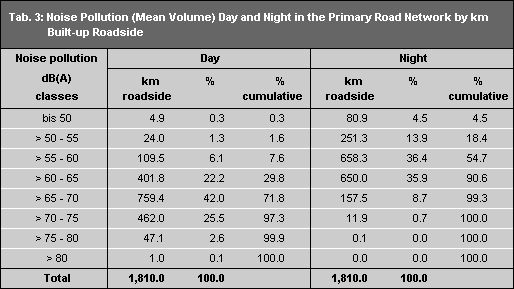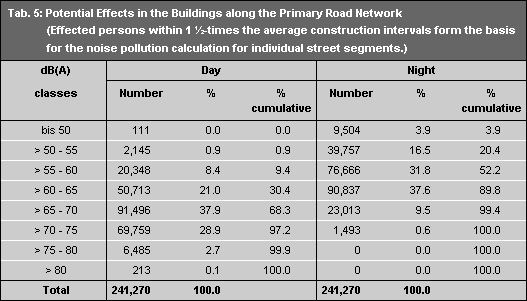It can be seen from the map that the traffic on the main network roads causes a very high noise load.
In Table 3, the length of the effected built-up roadsides or their percentage of the overall length is shown for each volume level.
During the day load levels between 65 and 70 dB(A) occur most frequently: about 760 km, that is 42 %, lie in this volume range.
Extreme loads over 80 dB(A) were measured for one segment a kilometer long (0.1 %). If one sets a basic level of 65 dB(A), which can be seen, according to current noise research, as the threshold for increased heart attack risk (c.f. Ising et al. 1997), then 1,270 km of built-up roadsides, or 70 %, could be seen as excessively polluted.
The following situation applies at night: The emphasis lies in the volume level from 55 to 60 dB(A), namely 658 km or approx. 36 %.
Levels exceeding 75 dB(A) only occur seldom. More than 1,478 km, or about 82 %, carry a load of more than 55 dB(A).



